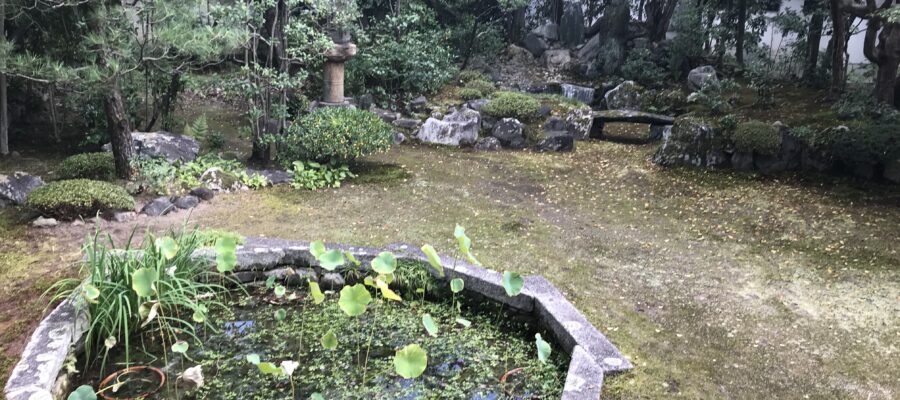長谷川等伯の佛涅槃図
五木寛之さんの百寺巡礼 京都編で知った京都のお寺の1つです。私の記憶が正しければ、長谷川等伯が描いた佛涅槃図についても書かれていたと思います。今回、その絵を見にきました。ただし、真筆は特定期間だけなので、私が見たのは原寸大の複製でした。
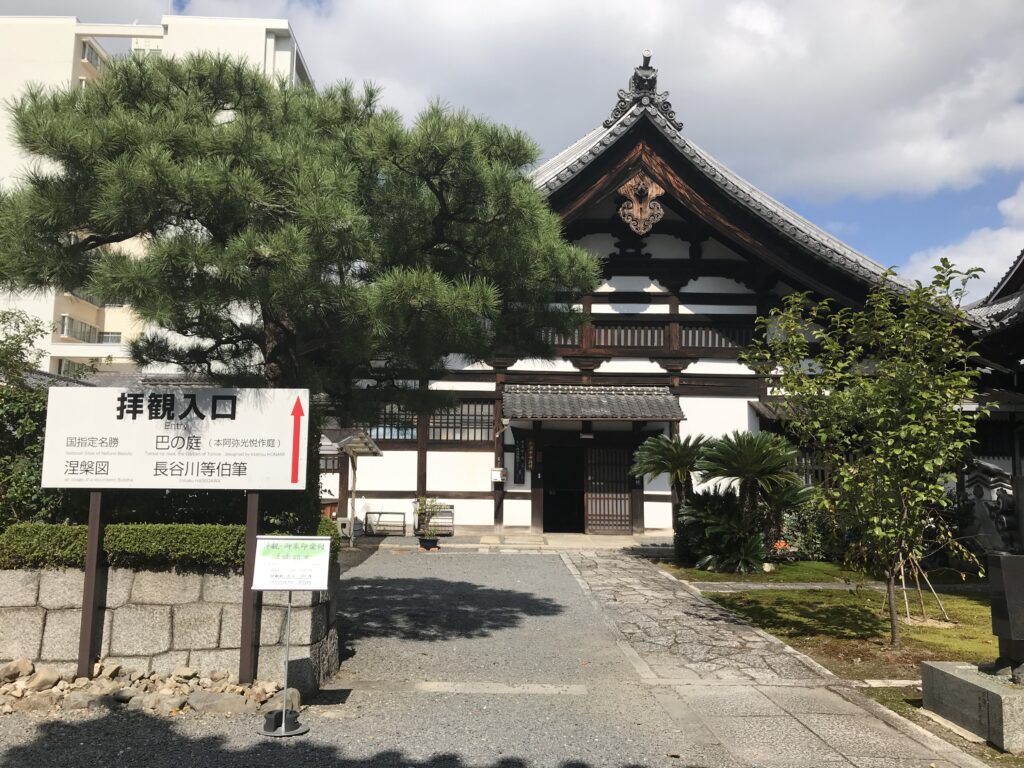
宝物館に入ると、左手方向の吹き抜けに大きな佛涅槃図が掛かっています。したから眺めると随分大きな絵で、近視の目では上の方がよく見えません。一階の部屋を出て、隣の階段から2階の部屋に入ると、こんどは佛涅槃図を見下ろすように眺めることができます。これは見やすいです。見上げていると見逃すものが多いのですが、見下ろしていると全体が良く見えます。
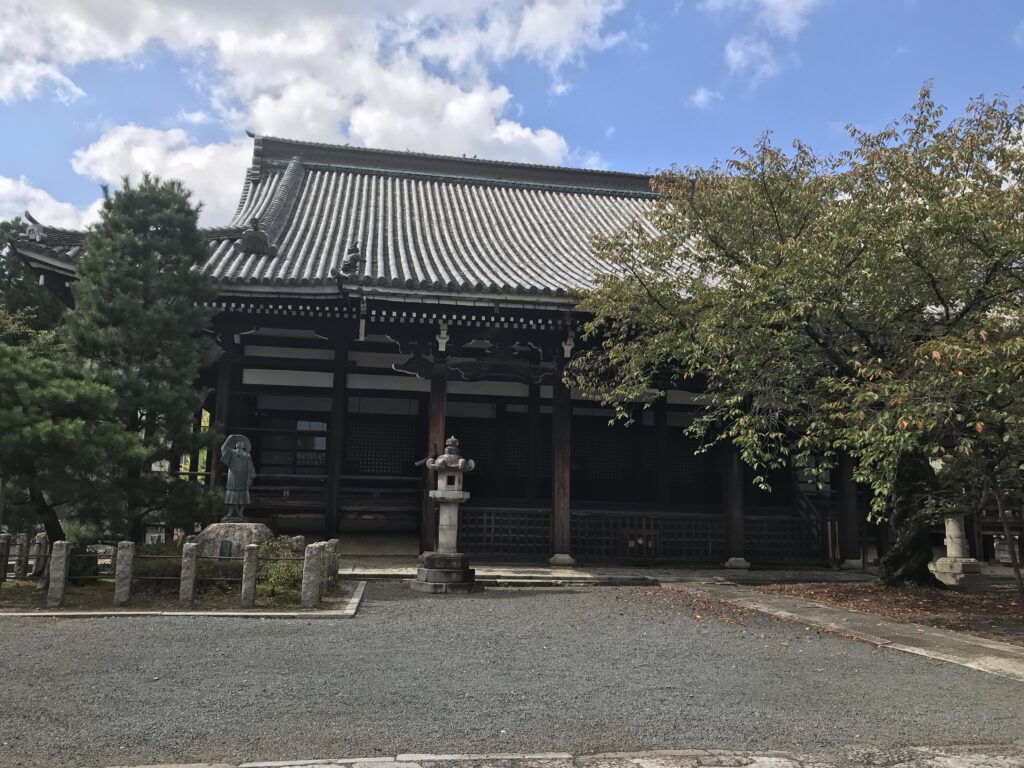
象ですら当時は空想の動物
涅槃図って、釈迦の入滅を哀しみ嘆く動物が集まってくる様子も描かれます。この絵にに象、虎や豹もいますが、何やら得体の知れない動物もいます。江戸時代ですから、象ですら、本物を見た人は、本当の象が来た一時を除いて、実物を見た人は皆無だったでしょう。画家にも、見る方にも空想の動物ですから、細かい描写までの必要なかったのかもしれません。
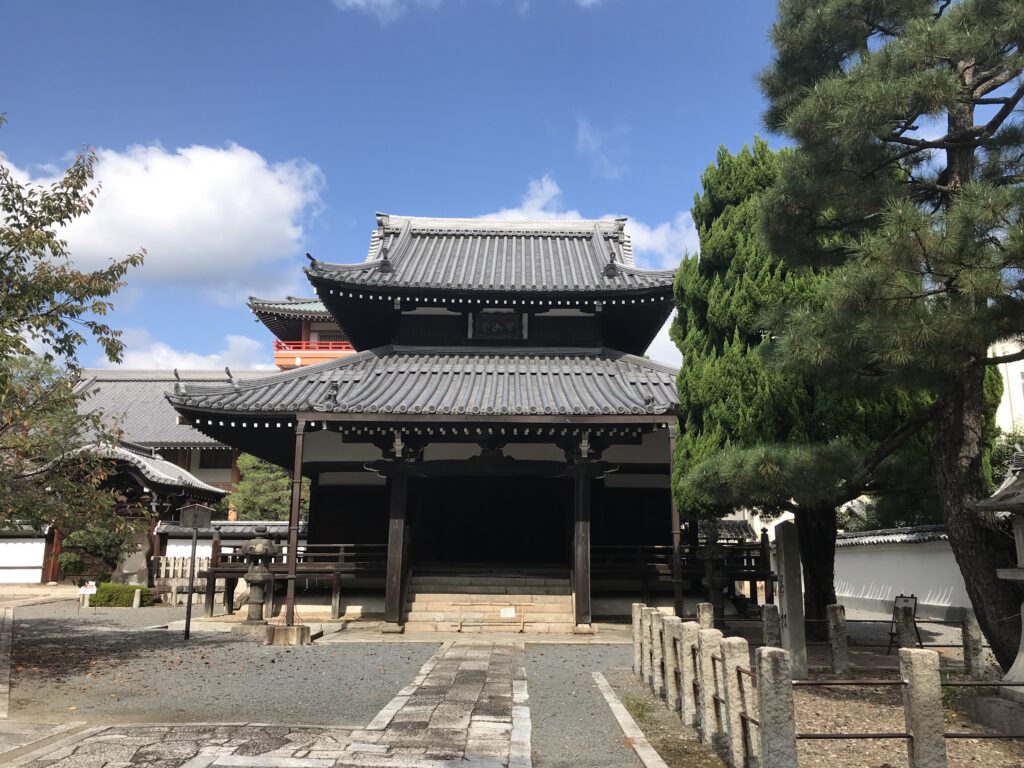
本阿弥光悦が造った庭
本法寺はもう一つ、芸術家との関係があります。本阿弥光悦によって造られたとされる「巴の庭」があります。この庭には、洒落が1つ隠されています。写真ではわかりにくいかもしれませんが、庭の右側に小さな池があり、そこには「蓮」が植えられています。また、その蓮池の左がわに円形の石が埋められているのですが、判別できるでしょうか。実はこの円形の石ですが、2つの半円形の石を組み合わせて円形を作っています。よく見ると、円の中に、横一文字がありますので、「日」のデザインと見ることもできます。「日」と「蓮」が並んでいまして、日蓮宗のお寺らしく、日蓮を表現しているそうです。
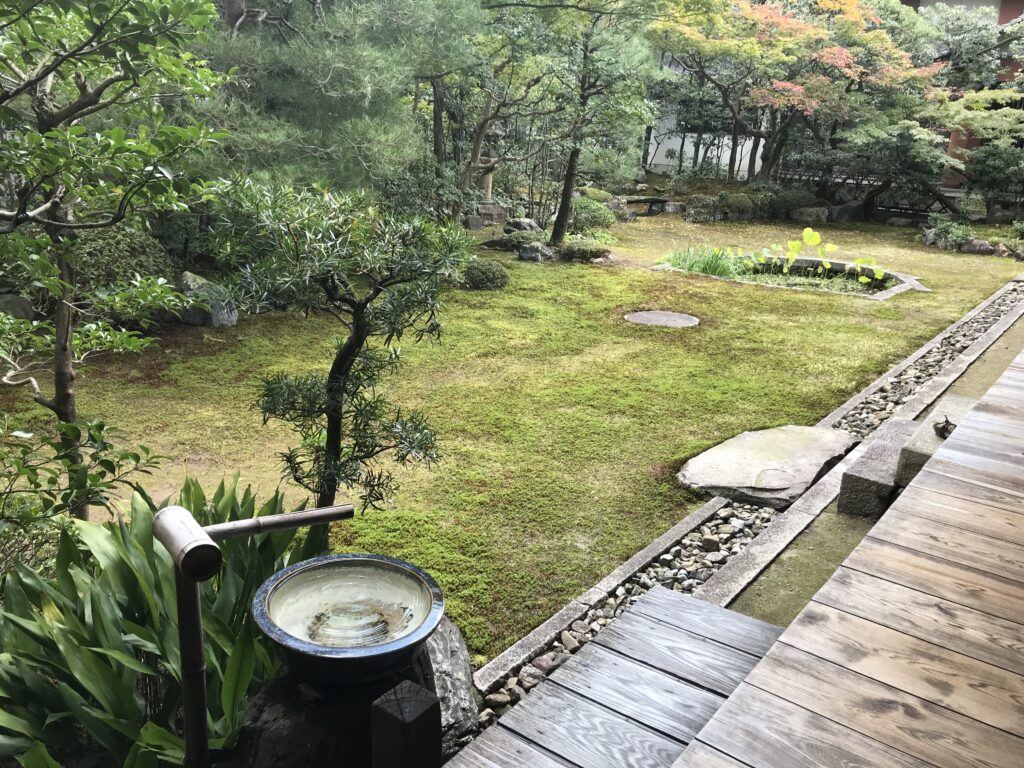
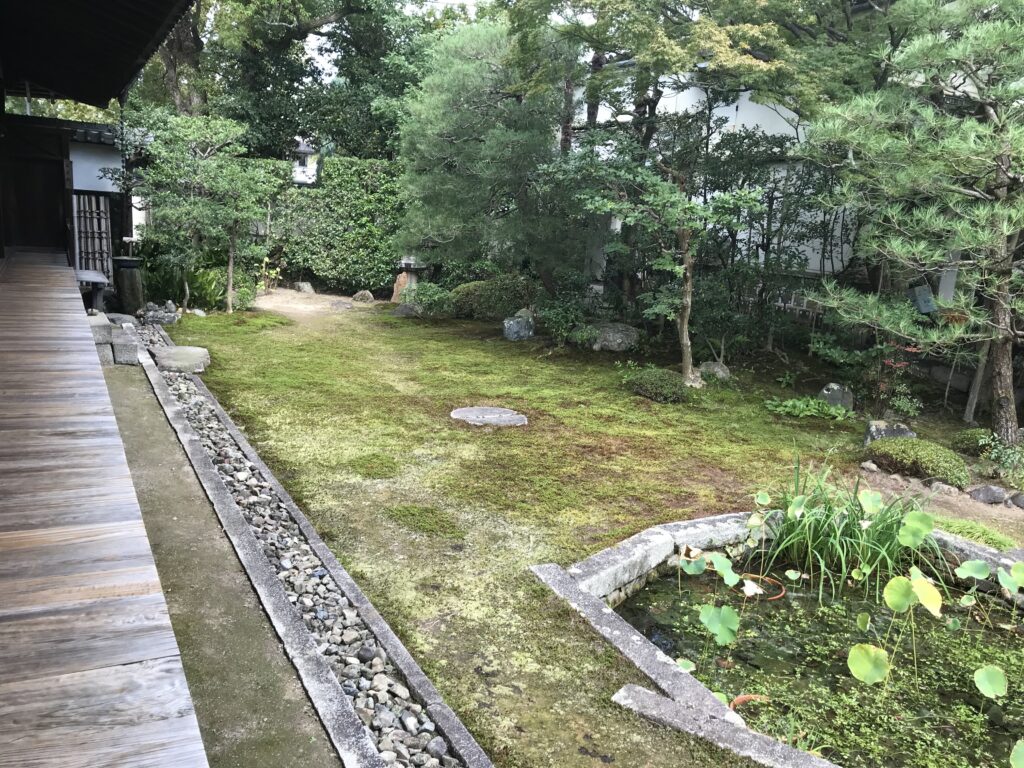
佛涅槃図を見に来たつもりでしたが、面白い庭に出会えて得した気分になりました。(完)
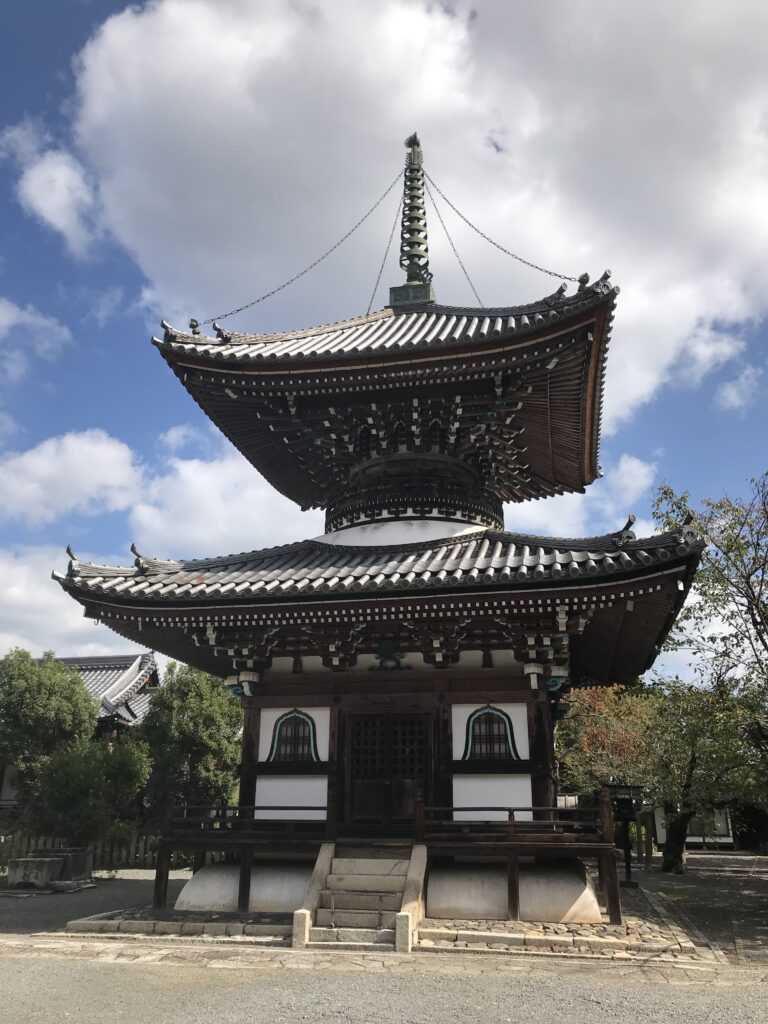
本法寺の御朱印
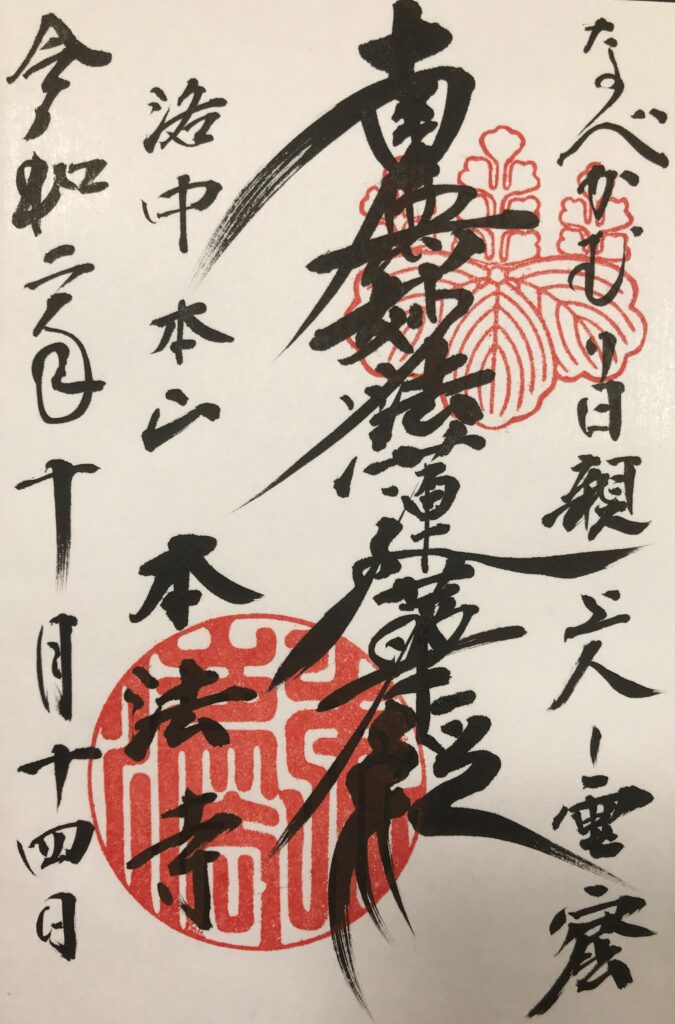
本法寺が紹介されている書籍
五木寛之さんの「百寺巡礼 第九巻 京都2 (講談社文庫)」に本法寺が紹介されています。
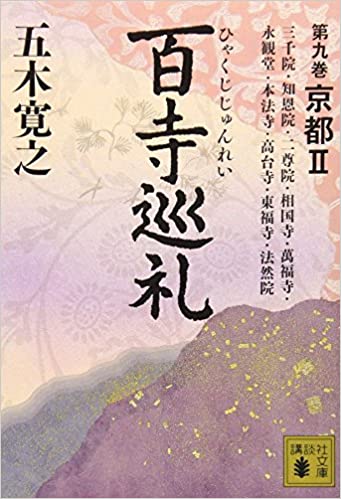
百寺巡礼 第九巻 京都2 (講談社文庫) [ 五木 寛之 ]
価格:618円
(2021/7/7 12:50時点)
感想(2件)
Honbouji Temple
This is one of the temples in Kyoto that I learned about in Hiroyuki Itsuki’s Hyakudera Pilgrimage to Kyoto. If I remember correctly, it also mentioned about the painting of the Nirvana of Buddha by Hasegawa Tohaku. This time, I came to see the painting. However, the authentic painting is only available for a specific period of time, so what I saw was a full-size reproduction.
When you enter the Treasure House, there is a large painting of the Reclining Buddha hanging in the atrium to the left. It was so large that my nearsighted eyes could not see the upper part of the painting. After leaving the first floor room and entering the second floor room from the adjacent stairway, you can look down on the reclining Buddha. It is easy to see. If you look up, you will miss many things, but if you look down, you can see the whole picture well.
The Nirvana painting also depicts a gathering of animals who are mourning the passing of the Buddha. There are elephants, tigers, and leopards in this painting, but there are also some unidentifiable animals. In the Edo period, no one would have seen a real elephant, except for one time when a real elephant came. Since these animals were imaginary to both the artist and the viewer, there may have been no need for detailed depictions of them.
Honbou-ji has another connection with artists. There is the Tomoe Garden, said to have been created by Honami Koetsu. There is one hidden pun in this garden. It may be difficult to see in the photo, but there is a small pond on the right side of the garden where lotus trees are planted. There is also a circular stone buried to the left of the lotus pond. Actually, this circular stone is a combination of two semi-circular stones to form a circle. If you look closely, you can see a single horizontal character within the circle, which can be seen as a “sun” design. The “sun” and the “lotus” are side by side, representing Nichiren, a Buddhist priest of the Nichiren sect of Buddhism.
I had intended to come here to see the painting of the Nirvana of Buddha, but I felt like I had gained a lot by seeing this interesting garden. (End)
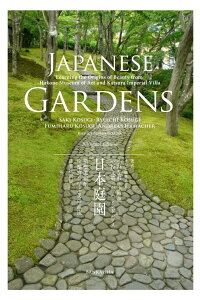
価格:1,320円
(2021/6/1 14:28時点)
感想(0件)
Le temple Honbouji
C’est l’un des temples de Kyoto dont j’ai entendu parler dans le livre de Hiroyuki Itsuki intitulé Hyakudera Pilgrimage to Kyoto. Si je me souviens bien, il y était également question de la peinture du Nirvana du Bouddha par Hasegawa Tohaku. Cette fois, je suis venu voir la peinture. Cependant, la peinture authentique n’est disponible que pendant une période spécifique, et ce que j’ai vu était donc une reproduction en taille réelle.
Lorsque vous entrez dans la Maison du Trésor, une grande peinture du Bouddha couché est accrochée dans l’atrium à gauche. Il était si grand que mes yeux de myope ne pouvaient pas voir la partie supérieure du tableau. Après avoir quitté la salle du premier étage et être entré dans la salle du deuxième étage par l’escalier adjacent, vous pouvez regarder le Bouddha couché. Il est facile à voir. Si vous regardez vers le haut, vous manquerez beaucoup de choses, mais si vous regardez vers le bas, vous pouvez bien voir l’ensemble du tableau.
La peinture du Nirvana représente également un rassemblement d’animaux qui pleurent la disparition du Bouddha. On y trouve des éléphants, des tigres et des léopards, mais aussi des animaux non identifiables. À l’époque d’Edo, personne n’aurait vu un véritable éléphant, à l’exception d’une fois où un véritable éléphant est venu. Ces animaux étant imaginaires pour l’artiste comme pour le spectateur, il n’était peut-être pas nécessaire de les représenter en détail.
Le Honbou-ji a un autre lien avec les artistes. Il y a le jardin Tomoe, dont on dit qu’il a été créé par Honami Koetsu. Il y a un jeu de mots caché dans ce jardin. Il est peut-être difficile à voir sur la photo, mais il y a un petit étang sur le côté droit du jardin où sont plantés des lotus. Il y a également une pierre circulaire enterrée à gauche de l’étang de lotus. En fait, cette pierre circulaire est une combinaison de deux pierres semi-circulaires pour former un cercle. Si vous regardez attentivement, vous pouvez voir un seul caractère horizontal à l’intérieur du cercle, qui peut être considéré comme un dessin de “soleil”. Le “soleil” et le “lotus” sont côte à côte et représentent Nichiren, un prêtre bouddhiste de la secte Nichiren du bouddhisme.
J’avais l’intention de venir ici pour voir la peinture du Nirvana de Bouddha, mais j’ai eu l’impression d’avoir beaucoup gagné en voyant ce jardin intéressant. (Fin)
